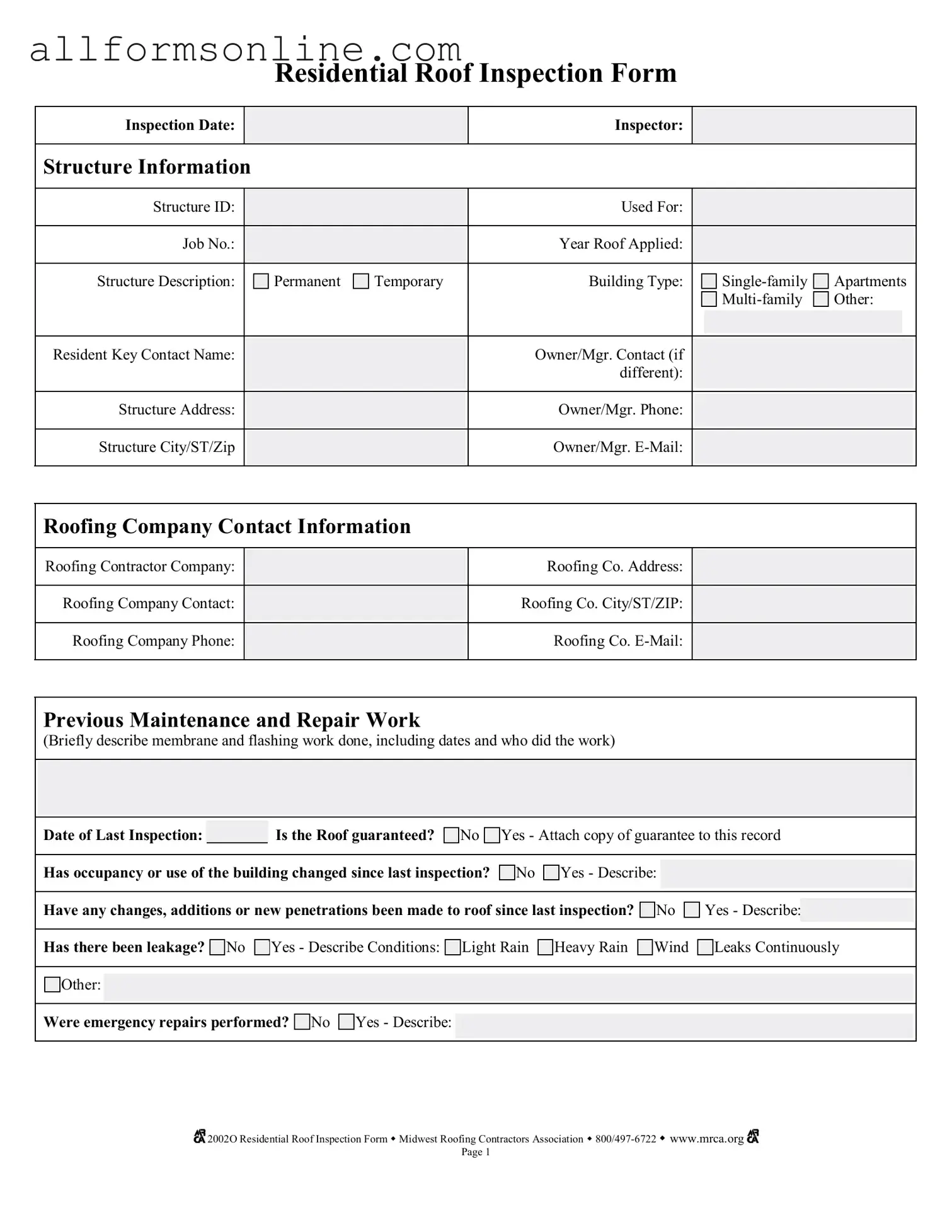What is the purpose of the Roof Inspection form?
The Roof Inspection form is designed to document the condition of a residential roof. It provides a comprehensive overview of various aspects, including structural integrity, previous maintenance, and any issues that may have arisen since the last inspection. This documentation is crucial for homeowners, property managers, and roofing contractors to assess the roof's current state and plan for necessary repairs or maintenance.
What information is required on the Roof Inspection form?
The form requires detailed information about the structure, including the inspection date, inspector's name, structure ID, and contact information for the owner or manager. Additionally, it asks for specifics about the roofing company, previous maintenance work, and any changes or issues observed since the last inspection. This thorough data collection helps ensure a complete assessment of the roof's condition.
How do I indicate the condition of the roof on the form?
Each section of the form includes a coding system to indicate the condition of various components. You can use three codes: G for Good (no action needed), F for Fair (monitor periodically), and P for Poor (immediate action required). This system allows for clear communication about the roof's condition and helps prioritize any necessary repairs.
What should I do if there has been leakage?
If leakage has occurred, the form provides a section to describe the conditions under which the leaks happened. You should note whether it was during light rain, heavy rain, or other circumstances. Additionally, indicate if emergency repairs were performed and provide details. This information is essential for understanding the severity of the issue and planning further action.
Is it necessary to attach a guarantee with the form?
If the roof is guaranteed, it is important to attach a copy of the guarantee to the inspection record. This documentation serves as proof of coverage and can be critical for addressing any future issues that may arise under the terms of the guarantee.
What should I do if the building's occupancy or use has changed?
If there has been a change in occupancy or use since the last inspection, you must describe these changes on the form. This information is vital because different uses can affect the roof's wear and tear, influencing maintenance needs and potential repairs.
How should I keep records of inspections?
It is essential to maintain copies of all inspection forms and any photographic or video evidence gathered during inspections. These records should be kept with the Roof Historical Record. Proper documentation helps track the roof's condition over time and supports informed decision-making regarding maintenance and repairs.
